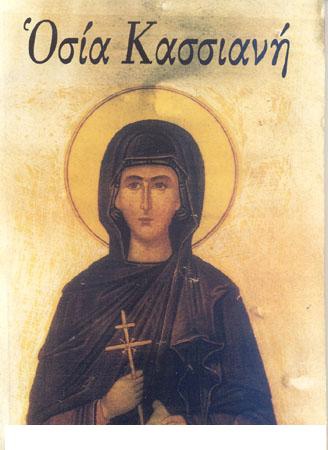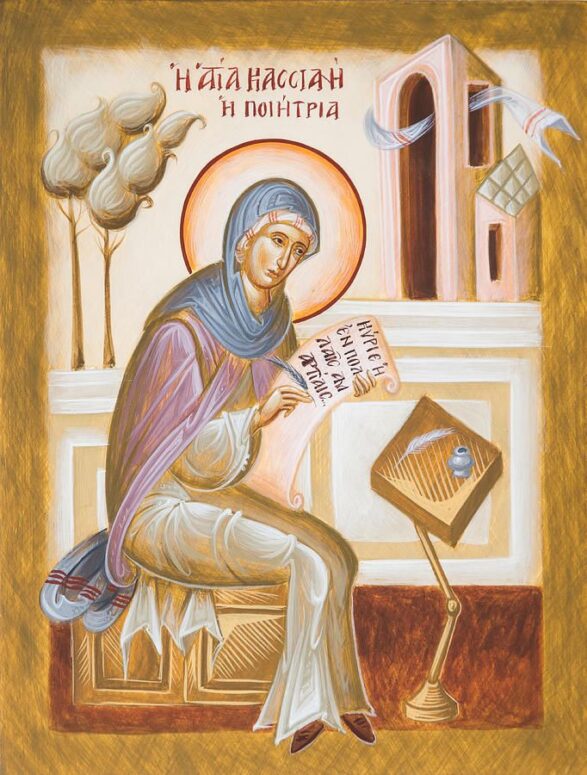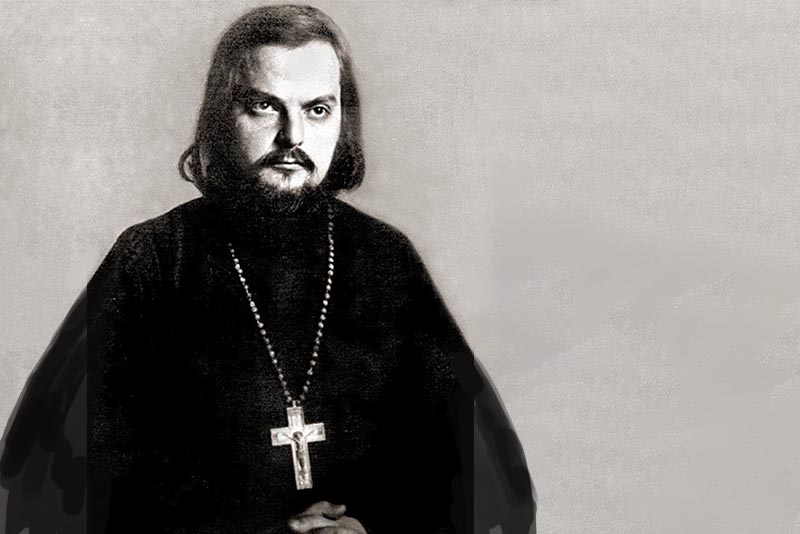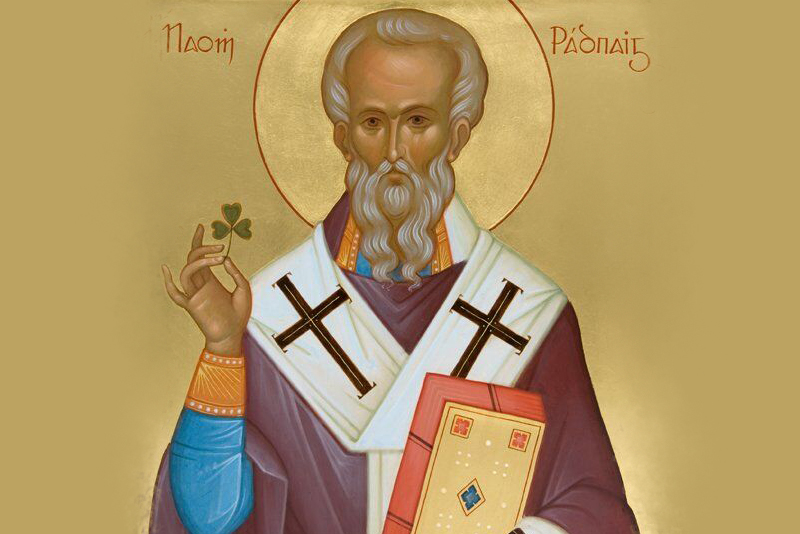
The personality of Kassia the Hymnographer is relatively unknown, but the stichera and irmoi written by her are familiar to every church person attending to the texts of divine services. Although this saint is absent from the menologies of the Russian Orthodox Church, she is widely revered in Greece. Besides, she is the only woman hymnographer whose creations can still be heard during the special Orthodox services of the Holy Week.
Coming to Monasticism and Ascetic Labors
Venerable Kassia was born between 800 and 810 into a noble Constantinople family. She grew up to be an amazingly beautiful and intelligent girl. When the young emperor Theophilus decided to marry, and gathered 12 of the most beautiful girls of the empire in his palace, Kassia was among them. According to custom, the emperor was to put a golden apple in the hand of his chosen bride. Noticing Kassia’s beauty, Theophilus approached her. Wanting to test her and having in mind the fall of Adam and Eve, he said, “It is woman who has given rise to evil.” The maiden replied sensibly, “Yes, but it is also through woman that the Highest Good has come to us.” meaning the Mother of God giving birth to the Savior of the world. The emperor was hurt by the sharpness of Kassia’s mind. Fearing that such a wife would surpass him, he chose St Theodora, who later restored Orthodox veneration of icons in Constantinople.
Spared from the dubious honor of being the wife of the zealous heretic and iconoclast Theophilus, Kassia left the world and used her private savings to found a monastery in Constantinople (has not survived), which was later renamed in her honor . In this monastery, after the exhortations of St Theodore the Studite, Kassia took monastic vows and became abbess. It was also here that she became “filled with wisdom and love of God” and created her many liturgical works.
From her youth Kassia openly opposed the policy of iconoclasm led by the emperor. For that she was persecuted and severely flogged during the ban on veneration of icons. However, the persecutors were unable to diminish her firm resistance. She visited the imprisoned monks in prisons, supporting them with gifts and letters. Speaking of those who, for lack of courage, deviated from professing Orthodoxy against the iconoclasts, she used to say, “I hate being silent when it is time to speak.”
St Kassia died peacefully between 843 and 867.

Famous Works of St Kassia
In the ancient liturgical books, such as the Menaea and the Triodion, researchers have found about 50 irmoi, stichera and canon troparia compiled by Kassia. However, only a few of them are found in the contemporary Orthodox services:
- Irmoi of the first five songs of the canon of Matins on Great Saturday, beginning with “Of old Thou didst bury the pursuing tyrant beneath the waves of the sea…”
- Sticheron at Matins on Great Wednesday “The woman who was guilty of an abundance of sins…”
- Sticheron at the Nativity vespers “When Augustus reigned alone up on the earth…”
- Sticheron at Vespers of the Nativity of St John the Baptist (June 24) – “Now the voice of Isaiah the prophet…”
- Two stichera on the feast day of St Eustratius and those martyred with him (December 13) – “Surpassing the Hellenic punishments…”
Some researchers assume that Kassia wrote not only the irmoi, but also the original versions of the troparia of the first five songs for Holy Saturday. However, the compilers of the service may have later found it unacceptable to use a canon written by a woman, and instructed Mark, Bishop of Otranto, to compile new troparia.

The music in most of St Kassia’s stichera is unique, which means that she has written it together with the text. In many cases, for example during Matins on Great Wednesday, performing of the sticheron “The woman who was guilty of an abundance of sins…” with the original music helps to deeply perceive its content. This sticheron, also called “the troparion of Kassia” compares the story of the evangelical sinner with the fall of Eve. The particular pace chosen by the hymn writer for it appears soft at the beginning and increases sharply with the transition to the heroine’s monologue. It then becomes even more intense as it reaches its climax, reflecting earnest repentance.
Liturgical works of St Kassia received high marks from the researchers. Archbishop Filaret of Chernigov, a well-known researcher of Greek liturgical chants describes Kassia’s writings as both “educational and pleasing”. He gives special prominence to her stichera of the Nativity of Christ and the Great Wednesday, calling the former “solemn and important” and the latter “full of deep feelings of contrition”.
In her works Kassia repeatedly draws parallels and finds interconnections between themes of the Old and New Testaments. Her writings testify to her deep knowledge of Holy Scripture, Orthodox theology, patristic works, the ascetic tradition and hymnography of the earlier times. In her works Kassia touches upon the topics that were important to her and relevant for her time. They include the veneration of icons, the Incarnation and a comparison between the power of the earthly and the Heavenly King. She also wrote about monastic life, sincere repentance, and exploits of holy Christian women.
Through her monastic feat and labors St Kassia, not receiving the earthly kingdom in her temporary life, acquired the kingdom of heaven. At the same time, her amazing works created by the gift of God put her on a par with the church’s great hymnographers and continue to turn souls of today’s believers to God.






Please, include documents that can be downloaded or printed. We have challenges here in Africa to find such information for the church. Help us please to have such documents.
Thank you for this!